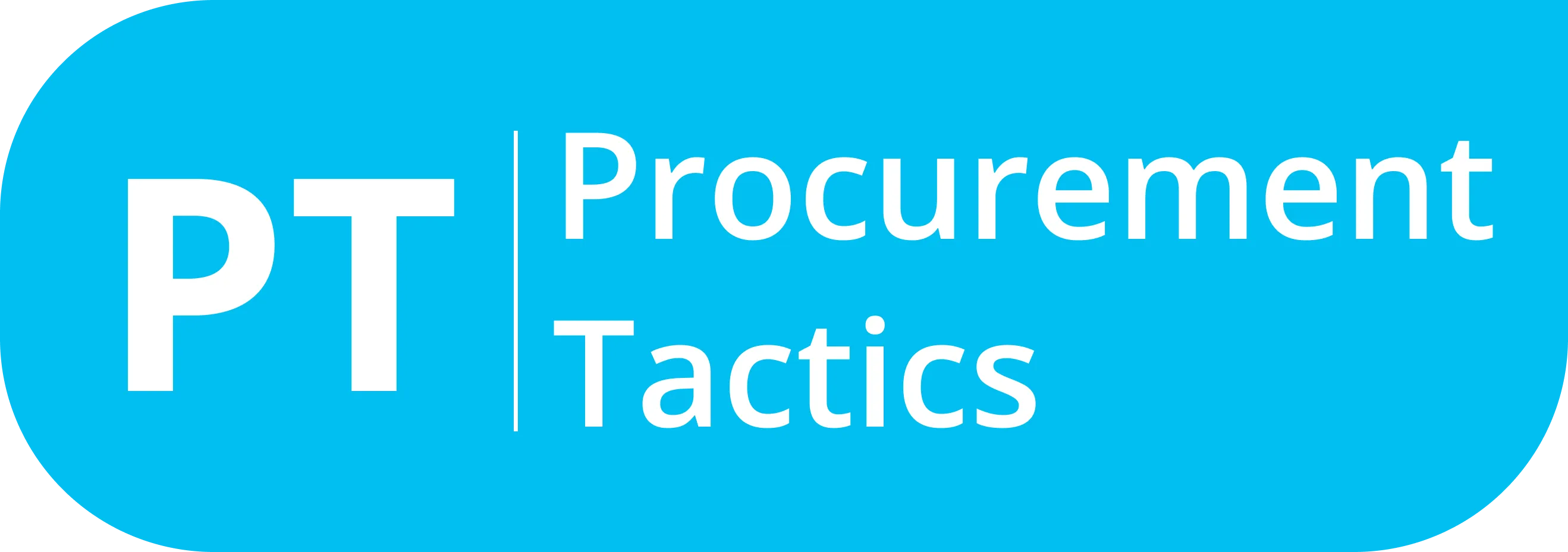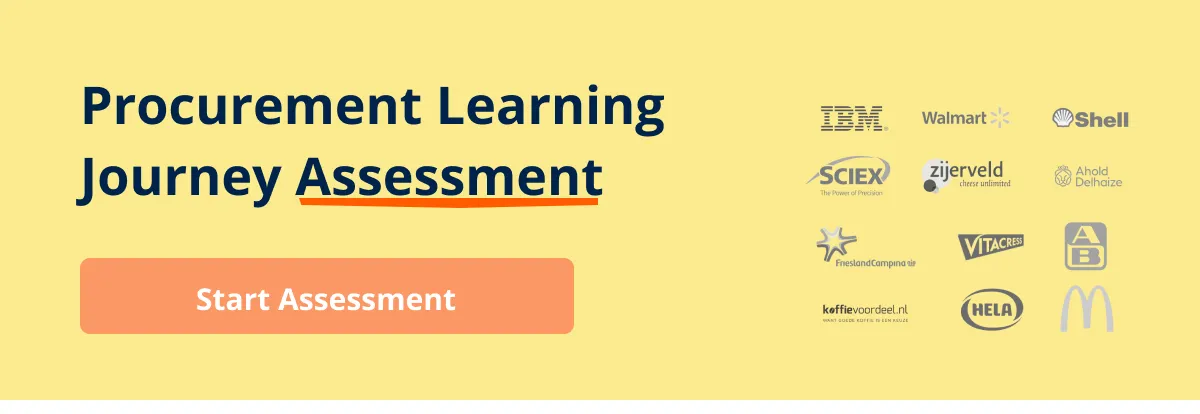Written by Marijn Overvest | Reviewed by Sjoerd Goedhart | Fact Checked by Ruud Emonds | Our editorial policy
Procurement Contracts — The Ultimate Guide of 2024
Key takeaways
- A procurement contract is a legal document that binds a buyer and a seller that outlines what is expected for them in a project.
- Contracts provide legal safeguards, and mitigate risks in transactions, fostering secure business dealings.
- Clear stipulations in contracts prevent disputes and ensure diligent fulfillment of obligations for both parties involved.
Many of us do not know what it means when we say procurement contracts. We only know it as a mere contract that needs a signature to validate. But, there is more to that than just a piece of paper with a signature on it.
For this article, we will define what procurement contracts are. We will explore its different types and usage as well as its advantages in your business transactions.
Finishing this article will allow you to use procurement contracts to your advantage. This will make you formidable in every business transaction that you will deal with. So now, let’s explore procurement contracts.
I have created a free-to-download, editable procurement contract template. It’s a set that includes a PowerPoint file and a Word file. You can use and tailor them to your needs when contracting with a supplier. I even created a video explaining how to use the templates.
What is a Procurement Contract?
A procurement contract, as the name implies, is a contract to procure the needed services or products. It is an agreement where the buyer and supplier bind themselves to manage a project.
An example of this is when a project team of a company communicates with a supplier. Their communication will turn into negotiations to ask for or procure the materials or services they need for the project.
Using a procurement contract will obligate the supplier to give the needed materials and services. The agreement will be the evidence that they have agreed on the price of the materials or services the company will procure.
How it Starts
A procurement process such as bidding will start before the procurement contract is born. The buyer or an employee in a company will determine whether the supplier is capable of contracting their needs. The company should be able to establish a strict procurement process.
Establishing a strict procurement process will determine the most suitable supplier for the project you are working on. Also, it will minimize procurement fraud in your company.
The procurement process often starts on the part of the buyer. It starts with the buyer due to the selection process that will be implemented in choosing their partner.
It usually starts by asking about the price of the materials and the quality of the supplier’s services that will be provided.
The Significance of Procurement Contracts
Like any other contract, a procurement contract is very important to business transactions. The procurement contract is an agreement between the buyer and supplier according to what we have discussed.
The agreement contains all the stipulations they had negotiated and are obliged to do. It contains the terms and conditions regarding the payment of the buyer to the supplier.
It also contains the list of orders, when and how they will be delivered, and the correction if there is any. The procurement contract is born from the trust between the buyer and the supplier.
When they both have doubts regarding the agreement, the management of the project will be disorganized. The very foundation of how a project can be done is the procurement contract because it solidifies their agreement.
The parameters they had agreed on in the contract will be beneficial for both of them. It will safeguard them from fraud and representation of bad faith when it comes to doing their obligations.
The Advantages of Procurement Contract
This section highlights the key advantages of having a procurement contract in business transactions:
1. Transparency
You will be safe from any deception if you know that who you are dealing with is transparent. In the procurement process, you will see all the agreements stipulated in the contract.
This will guarantee you that you are safe from any fraud or misrepresentation of the supplier. This will build a more solid relationship between the buyer and supplier. You will feel safe if everything is aligned with what you agreed on.
Full disclosure of all the prices and receipts will strengthen the bond between the buyer and supplier. A great amount of honesty is needed to maintain the relationship between the buyer and supplier in transparency.
2. No disputes due to their agreement
There will be less misunderstanding when the buyer and supplier have agreed to all the stipulations. They both understand what is already stipulated and have agreed to do it with due diligence. The buyer or an employee in a company will determine whether the supplier is capable of contracting their needs.
They both know that they must cooperate with what they have agreed upon. The procurement contract has made both the buyer and supplier evaluate their performance to do their obligation. The procurement contract allows the performance of the buyer and supplier to be at its best.
3. Safeguard from running away with the obligation
The buyer and supplier are both liable to perform their duties stipulated in the contract. They are both liable to one another once they have signed the contract.
Legal actions are considered to make the other comply when one of them has the intention to defraud. The procurement contracts are utilized to guarantee safety In every business transaction. They have to make sure that when they transact, everything is by the law.
This is to have a guarantee that they can seek remedy when one of them has the intent to defraud.
Different Types of Procurement Contracts
We have discussed the importance and advantages of procurement contracts. Now that we have an in-depth knowledge of why it is done in every business transaction, let’s now differentiate the types of procurement contracts for you to use them effectively:
1. Fixed-price contract
The most common contract used in business transactions is the fixed-price contract. Regardless of internal or external factors that may raise the price, the amount to be paid is set in this type of contract.
The price that they agreed on during the signing of the contract will be the price until the project ends. One of its advantages is that it sets a clear term between the parties involved. The term of the contract is well-known between parties which sets the ground for both of them.
A fixed-price contract is straightforward and clear when it comes to its terms and the establishment of the negotiated price.
2. Cost-reimbursement contracts or cost-control contracts
This happens when the buyer agrees to pay the supplier for the direct and indirect costs of the project.
A fixed fee or percentage profit over the cost price is awarded to the buyer. This puts much risk at the expense of the supplier. They will only get paid once the expenses have been validated.
The seller will bear the additional cost if there are changes to the project. To counter this, the supplier will add additional costs.
3. Time and materials contract
The materials and time the vendor has spent will be reimbursed in this type of procurement contract. The vendor may seem like a third party of the contractor due to this.
It is most common on projects that are not quantifiable. Rather, it demands flexibility due to changes that might happen in the project in its mid-course. This type of project requires insights so that it does not go over budget and remains on track.
Toolsfor Procurement Contracts
Here are some tools for Procurement Contracts that you need to be aware of!
1. Juro
Juro, founded in 2016, is an end-to-end contract management platform that offers great functionality. It offers an appealing user interface with powerful search capabilities and Ai-enabled analytics. Juro has a free option that provides the right mix of basic features.
2. DocuSign
DocuSign started as an e-signature company but developed in 2018 after it was acquired by SpringCM. After its acquisition, it developed CLM capabilities that make it simple to use for all parties involved in the contract. DocuSign gives access to inexpensive contract management solutions that are best for small businesses.
3. Concord
Concord has a simple design that helps enterprises stay on top of compliance. It allows companies to send an unlimited number of documents with its onboarding support and enterprise-grade features. Concord is the best choice for large companies due to the unlimited volume and key integrations.
The Point of Procurement Contracts
Using procurement contracts is evidence that both the buyer and supplier have agreed to their terms. It is the thing that binds them to their obligation and ensures that the project will be done.
The type of procurement contract to be used has no definite rule. However, it is important to know the difference between the three to decide on the perfect fit for your project.
It will save you lots of money once you know how to use it effectively. Because a bad decision can cause you a lot and may put your company in a bad light.
If you know how to negotiate all your terms, you will successfully be an expert in the field. Do you want to close all your deals in every transaction? Then check out our Negotiation Course For Procurement Professionals for a better result for your negotiation deals.
Conclusion
Understanding procurement contracts is vital for effective business transactions. They ensure transparency, prevent disputes, and provide security.
Frequentlyasked questions
What is a procurement contract?
A procurement contract is a written contract that states all your needed goods or services to operate.
Should I use one?
Yes! A procurement contract details all your agreements. This protects you from any fraud or bad intentions of a supplier.
What type of procurement contract suits my business?
There is no definite rule on which contract you should choose. Your choice will be based on your specific needs in your business.
About the author
My name is Marijn Overvest, I’m the founder of Procurement Tactics. I have a deep passion for procurement, and I’ve upskilled over 200 procurement teams from all over the world. When I’m not working, I love running and cycling.


